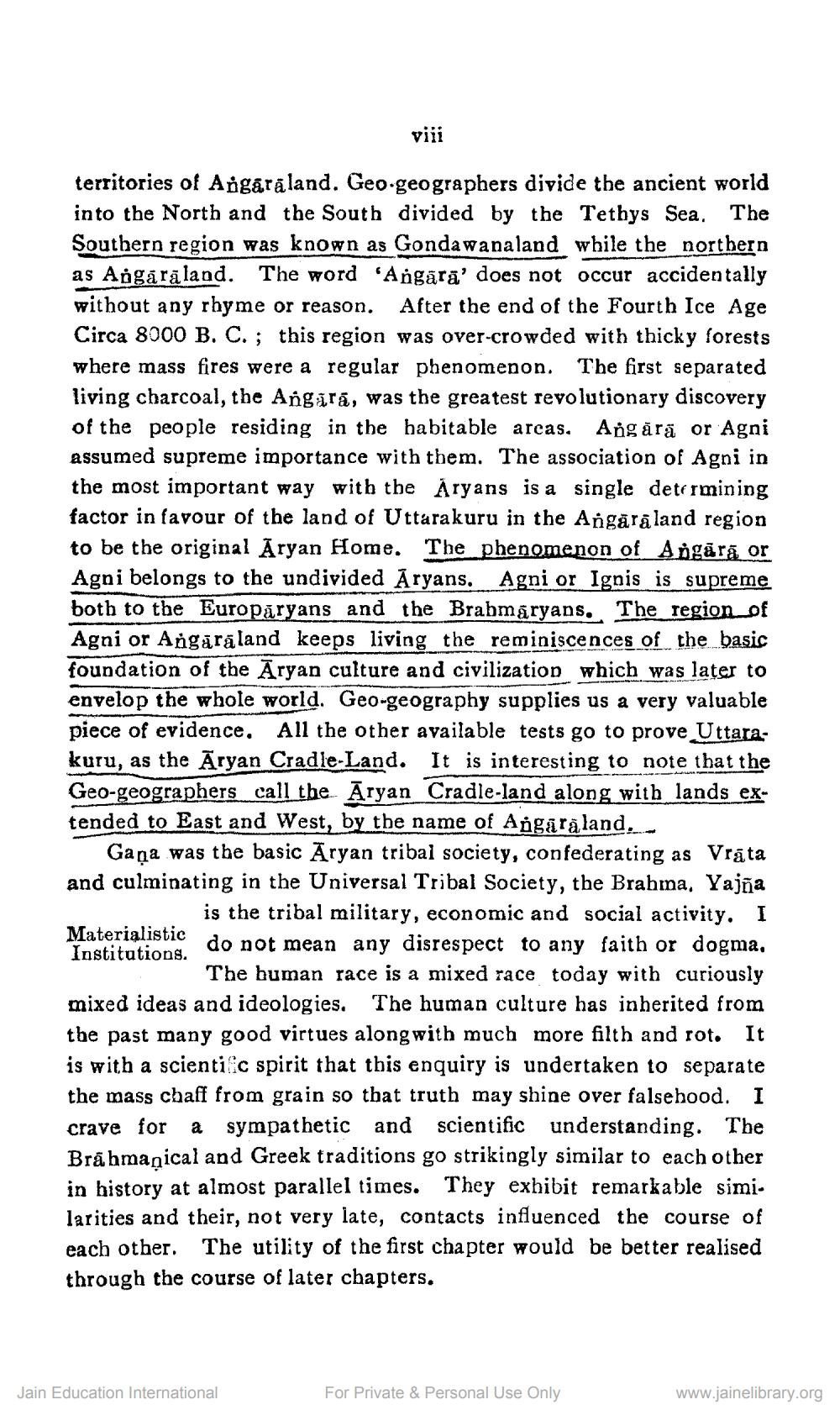________________
viii
territories of Angaraland. Geo.geographers divide the ancient world into the North and the South divided by the Tethys Sea. The Southern region was known as Gonda wanaland while the northern as Angārā land. The word 'Angārā' does not occur accidentally without any rhyme or reason. After the end of the Fourth Ice Age Circa 8000 B. C. ; this region was over-crowded with thicky forests where mass fires were a regular phenomenon. The first separated living charcoal, the Angārā, was the greatest revolutionary discovery of the people residing in the habitable arcas. Angārā or Agni assumed supreme importance with them. The association of Agni in the most important way with the Aryans is a single detrimining factor in favour of the land of Uttarakuru in the Angārāland region to be the original Aryan Home. The phenomenon of Angārā or Agni belongs to the undivided Āryans. Agni or Ignis is supreme both to the Europāryans and the Brabmäryans. The region of Agni or Angārāland keeps living the reminiscences of the basic foundation of the Aryan culture and civilization which was later to envelop the whole world. Geo-geography supplies us a very valuable piece of evidence. All the other available tests go to prove Uttarakuru, as the Āryan Cradle-Land. It is interesting to note that the Geo-geographers call the Āryan Cradle-land along with lands extended to East and West, by the name of Angaraland.
Gaga was the basic Āryan tribal society, confederating as Vrāta and culminating in the Universal Tribal Society, the Brahma. Yajña
is the tribal military, economic and social activity. I Materialistica Institutions.
do not mean any disrespect to any faith or dogma,
The human race is a mixed race today with curiously mixed ideas and ideologies. The human culture has inherited from the past many good virtues along with much more filth and rot. It is with a scientific spirit that this enquiry is undertaken to separate the mass chaff from grain so that truth may shine over falsehood. I crave for a sympathetic and scientific understanding. The Brāhmaṇical and Greek traditions go strikingly similar to each other in history at almost parallel times. They exhibit remarkable similarities and their, not very late, contacts influenced the course of each other. The utility of the first chapter would be better realised through the course of later chapters.
Jain Education International
For Private & Personal Use Only
www.jainelibrary.org




